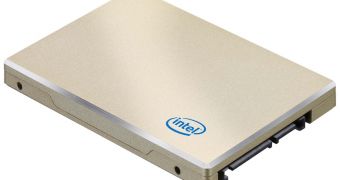Without a doubt, Intel is one of the dominant forces in the SSD market, launching quite a large number of high-end units over time, the latest to join their lineup being the brand-new Intel SSD 510 series.
According to the chip manufacturer, the main selling point the new solid-state drive series has in store is represented by its SATA III connector, enabling data transfer rates of up to 6Gbps, which is really an impressive value, to say the least.
The brand-new Intel SSD 510 Series employs the company's 34-nanometer NAND flash memory, enabling some pretty impressive access speeds, namely up to 500 MB/s in sequential read operations and up to 315 MB/s in sequential write operations.
Beside these impressive speed-related values, it's also important to point out that the new solid-state drives from Intel also offer some pretty OK storage capabilities, as they're available in 250GB and 120GB versions.
While the 250GB model is roomy enough to be used as the only storage solution for just about any type of system, the 120GB model can be safely employed within hybrid storage systems, within which the solid-state drive is used as a boot partition (due to its higher speeds), while the actual storage is done with the help of a large-size HDD.
It's also important to mention that the new SSD drives from Intel are accompanied by the Intel SSD Toolbox with Intel SSD Optimizer, a free management and diagnostics utility, while users can also download for free the Intel Data Migration Software for cloning the content of a previous storage drive (SSD or HDD) to any Intel SSD.
As far as the pricing of the new SSD units from Intel is concerned, we'd dare to say that it's actually fairly good (compared to some of the other competing products on the market), given the fact that the 120GB model sells for around 284 US dollars, while the 250GB version's price point is set at 584 US dollars.
However, as an important side-note, these price points only apply for 1,000-unit quantities, which means that they target specifically OEMs, rather than end-consumers.

 14 DAY TRIAL //
14 DAY TRIAL //